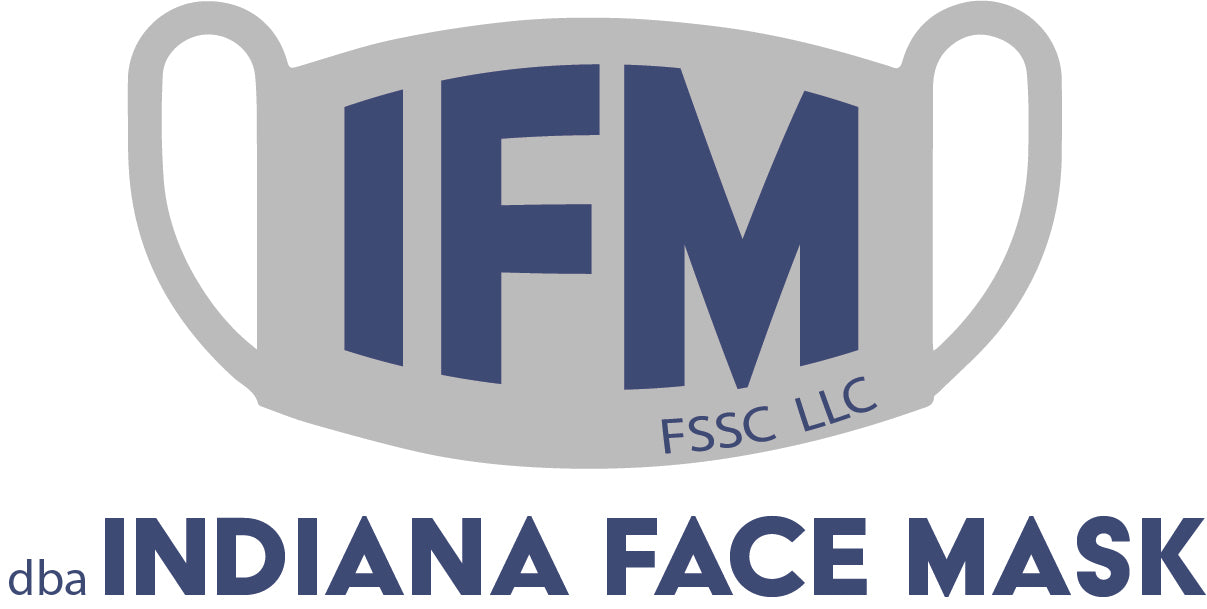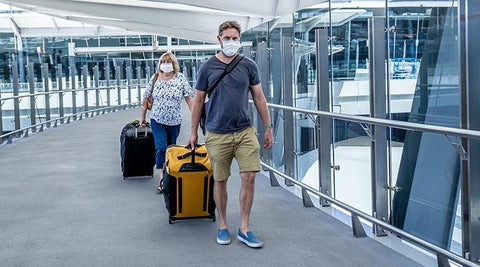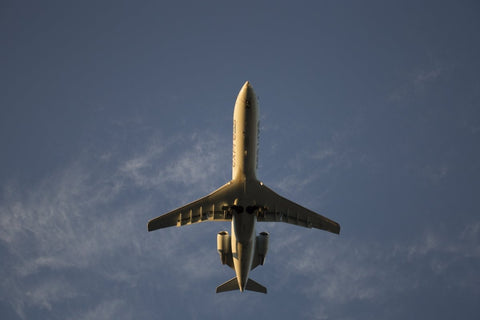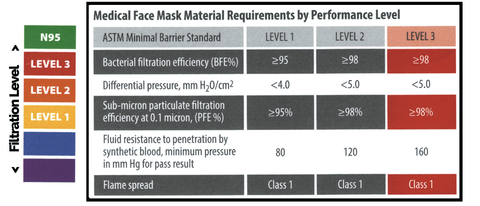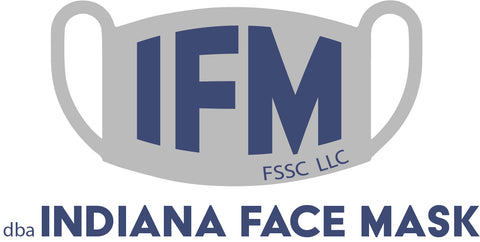These FAQ reference the CDC Public Travel Mask Order. (Full PDF Version)
"The Centers for Disease Control and Prevention (CDC) issued an Order on January 29, 2021 requiring the wearing of masks by travelers to prevent spread of the virus that causes COVID-19. Conveyance operators must also require all persons onboard to wear masks when boarding, disembarking, and for the duration of travel. Operators of transportation hubs must require all persons to wear a mask when entering or on the premises of a transportation hub.
This Order must be followed by all passengers on public conveyances (e.g., airplanes, ships, ferries, trains, subways, buses, taxis, ride-shares) traveling into, within, or out of the United States as well as conveyance operators (e.g., crew, drivers, conductors, and other workers involved in the operation of conveyances) and operators of transportation hubs ( e.g., airports, bus or ferry terminals, train or subway stations, seaports, ports of entry) or any other area that provides transportation in the United States.
People must wear masks that cover both the mouth and nose when awaiting, boarding, traveling on, or disembarking public conveyances. People must also wear masks when entering or on the premises of a transportation hub in the United States.
This Order is effective as of February 2, 2021 and was published in the Federal Register on February 3, 2021."

General Travel FAQ:
What is a public transportation conveyance?
- A public transportation conveyance is any mode of transportation other than a private vehicle. Types of public transportation conveyances include airplanes, trains, subways, buses, taxis, ride-shares, maritime transportation, trolleys, and cable cars.
Which public transportation conveyances does the order apply to?
- The order applies to all public transportation conveyances traveling into the United States (i.e., arriving from a foreign country) or within the United States (including within states or territories or traveling between states or territories). This includes school buses. The Order also applies to all conveyances leaving the United States until they arrive at a foreign destination.
Are masks required on school buses?
- Yes, passengers and drivers on school buses must wear a mask, including on buses operated by public and private school systems, subject to the exclusions and exemptions in CDC’s Order. Operators of school buses should refer to the Department of Education’s COVID-19 for additional guidance.
- Drivers do not need to wear a mask if they are the only person on the bus.
What kind of mask should I wear?
- People must wear masks that completely cover the mouth and nose. Masks should fit snugly against the sides of the face. See CDC’s guidance for attributes of masks needed to fulfill the requirements of the Order. For more information about masks, see Your Guide to Masks.
Can I wear a face shield instead of a mask?
- Face shields do not fulfill the requirements of the Order. Face shields may be worn in addition to a mask that fulfills the requirements of the Order, but face shields may not be worn instead of a mask. A face shield is effective at protecting the person wearing it from splashes to the face, particularly the eyes, but face shields do not protect others from respiratory droplets exhaled by the wearer. A face shield worn without a mask also does not protect the person wearing it from inhaling respiratory droplets.
What is a transportation hub?
- A transportation hub is any location, indoors or outdoors, where people await, board, or disembark public transportation conveyances. These include but are not limited to commercial airports, general aviation airport buildings with commercial flights, bus terminals, all commercial vessel terminals, marinas, train and subway stations, seaports, U.S. ports of entry, and dedicated ride-share pick-up locations.
Which transportation hubs does the order apply to?
- The order applies to all transportation hubs in the United States and U.S. territories, except those operated by the U.S. Department of Defense.
Who is an operator of a public transportation conveyance?
- A public transportation conveyance operator is any individual (e.g., crew, driver) or organization (e.g., transportation company) causing or authorizing the operation of a conveyance.
What happens if I don’t wear a mask on a public transportation conveyance?
- Operators of public transportation conveyances must refuse to board anyone not wearing a mask that completely covers the mouth and nose and require that everyone on board wears a mask for the entire duration of travel. If a passenger refuses to comply, the operator must disembark the person at the earliest safe opportunity.
What happens if I don’t wear a mask in a transportation hub?
- Operators of public transportation hubs must use best efforts to make sure that anyone entering the premises is wearing a mask that completely covers the mouth and nose and require that everyone on the premises wears a mask, subject to the exclusions and exemptions in CDC’s Order. If a person refuses to comply, the operator must use best efforts to remove the person from the premises at the earliest safe opportunity.
What if I need to take my mask off during travel or in a transportation hub?
- There are some circumstances when taking your mask off would be necessary, including brief periods of time while eating, drinking, or taking medication. Other reasons include medical emergencies, to verify identity during security screenings, or if asked to do so by ticket/gate agents or law enforcement. On a plane, masks should be removed if oxygen masks are needed because of loss of cabin pressure or other event affecting aircraft ventilation.
- If you touch your mask while wearing or removing, wash hands with water and soap for 20 seconds or use hand sanitizer.
Do workers at transportation hubs need to wear masks at all times in a work area?
- Employees must wear a mask while on the premises of a transportation hub unless they are only person in the work area, such as might occur in private offices, private hangars at airports, or in railroad yards. If another person enters the work area, or the employee leaves the work area and enters another area where others may be located, the employee must wear a mask. If the nature of the work area is such that persons are likely to be located there and are permitted to enter or leave unannounced, then a mask must be worn at all times.
- Employees are also exempted from the mask requirement if wearing a mask would create a risk to workplace health, safety, or job duty as determined by the relevant workplace safety guidelines or federal regulations.
Do I need to wear a mask if I have recovered from COVID-19?
- Yes, the order requires all travelers to wear a mask, including those who have recovered from COVID-19.
Do I need to wear a mask if I have had a COVID-19 vaccine?
- Yes, the order requires all travelers to wear a mask, including those who are fully vaccinated against COVID-19.
What if another person near me refuses to wear a mask?
- If you are on a conveyance and a passenger near you refuses to wear a mask, alert personnel working on the conveyance (e.g., crew member, driver, conductor) for assistance. If you are in a transportation hub, notify a staff member or security personnel.
Does CDC’s Order allow removal of a mask while on the premises of a transportation hub for the purpose of smoking or using tobacco products in areas where tobacco use is otherwise allowed?
- No. CDC’s Order does not include an exception for tobacco use. Additional information about smoking and COVID-19 may be found on CDC’s website.
Why is CDC making this a requirement now?
-
Scientific evidence shows that consistent and universal use of masks on public transportation systems and in transportation hubs will protect Americans and help to reduce the spread of COVID-19. Mask use will enable Americans to travel responsibly and as safely as possible when they need to travel during the pandemic.
Maritime Travel FAQ:
-
Does the mask order apply to all commercial maritime conveyance activity in the United States?
- Yes, the mask order applies to all persons traveling on commercial maritime conveyances into, within, or out of the United States and to all persons at U.S. seaports. The term commercial maritime conveyance means all forms of commercial maritime vessels, including but not limited to cargo ships, fishing vessels, research vessels, self-propelled barges, and all forms of passenger carrying vessels including ferries, river cruise ships, and those chartered for fishing trips, unless otherwise exempted.
Which maritime vessels are exempted from CDC’s mask order?
- Only the following maritime conveyances are exempted:
- Private maritime conveyances operated solely for personal, non-commercial use (e.g., personal watercraft),
- When the operator is the sole occupant on board the maritime conveyance,
- Mobile offshore drilling units and platforms, to include floating and fixed Outer Continental Shelf facilities as defined in 33 CFR 140.10, and
- Certain maritime conveyances excluded from the definition of vessels under 42 CFR 70.1:
- Fishing boats including those used for shell-fishing*;
- Tugs which operate only locally in specific harbors and adjacent waters†;
- Barges without means of self-propulsion;
- Construction-equipment boats and dredges; and
-
Sand and gravel dredging and handling boats.
* Fishing vessels, fish processing vessels, and fish tender vessels as defined under 46 U.S.C § 2101 do not fall under this exemption — including shell-fishing vessels. A “fishing boat” is an auxiliary craft as defined under 46 U.S.C § 4502(k) carried on board a fishing vessel.
† Tugs which operate only locally in specific harbors and adjacent waters means tug vessels operating exclusively within a worksite and that have been issued a worksite exemption by the U.S. Coast Guard.
How is CDC defining the term seaport in the mask order?
- The term seaport means any port of entry or any other place where persons await, board, or disembark all forms of maritime commercial conveyances (e.g., a marina or dock).
Are mariners on non-passenger commercial maritime conveyances exempt from wearing a mask under the exemption for “a person for whom wearing a mask would create a risk to workplace health, safety, or job duty as determined by the relevant workplace safety guidelines or federal regulations”?
- No, this exemption does not exempt mariners from the mask order simply by virtue of working on a non-passenger related commercial maritime conveyance. To be exempt, the mariner would need to be performing a duty that would, if a mask were worn, create a risk to workplace health, safety, or job duty as determined by the relevant workplace safety guidelines or federal regulations. The exemption only applies while performing that duty.
Mariners on many non-passenger-related commercial maritime conveyances (e.g., cargo and towing ships) live on board for weeks with little contact outside the crew. How should the mask order be applied onboard these conveyances during a voyage?
- Mariners on non-passenger commercial ships should be guided by CDC’s Interim Guidance for Ships on Managing Suspected or Confirmed Cases of Coronavirus Disease 2019 (COVID-19) in following the requirements of the mask order. Per the Interim Guidance, crew should wear masks when outside of their single occupancy cabin unless work duties prevent their safe use or necessitate personal protective equipment due to worksite hazards. Mariners would not be expected to wear a mask while they are alone and are eating, sleeping, or resting.
- Additionally, mariners must wear masks when other persons (e.g., visitors, pilots, inspectors) join the ship for any period of time and when mariners disembark the ship. During these activities, masks should be worn in addition to maintaining a distance of six feet between individuals.
Does the mask order apply to a personal watercraft that is occasionally used commercially?
-
While the order does not apply to personal maritime conveyances, the mask order applies to all persons on board if a personal maritime conveyance is used for a commercial purpose, such as for a chartered fishing trip, including while awaiting, boarding, and disembarking at the seaport. Operators of such conveyances do not need to wear a mask if they are the only person on board.
